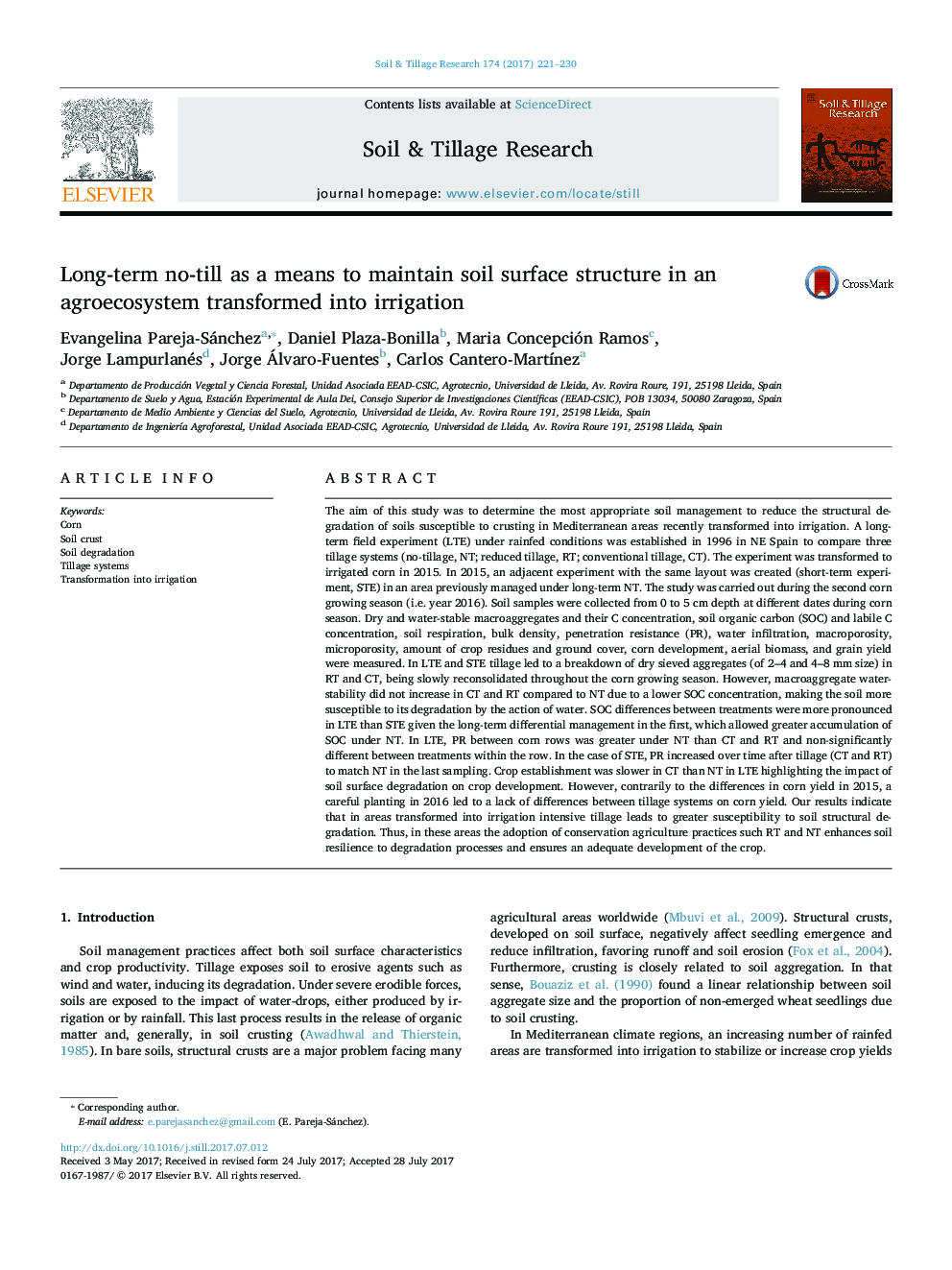| کد مقاله | کد نشریه | سال انتشار | مقاله انگلیسی | نسخه تمام متن |
|---|---|---|---|---|
| 4927470 | 1431829 | 2017 | 10 صفحه PDF | دانلود رایگان |
- No-till and high C input are key to avoid soil degradation in newly irrigated areas.
- Lower stability of aggregates led to soil crusting under conventional tillage.
- Long-term no-till led to greater soil organic carbon content.
- Long-term no-till enhanced aggregate stability and early corn development.
- No-till avoids soil crust formation, securing corn yield, in newly irrigated areas.
The aim of this study was to determine the most appropriate soil management to reduce the structural degradation of soils susceptible to crusting in Mediterranean areas recently transformed into irrigation. A long-term field experiment (LTE) under rainfed conditions was established in 1996 in NE Spain to compare three tillage systems (no-tillage, NT; reduced tillage, RT; conventional tillage, CT). The experiment was transformed to irrigated corn in 2015. In 2015, an adjacent experiment with the same layout was created (short-term experiment, STE) in an area previously managed under long-term NT. The study was carried out during the second corn growing season (i.e. year 2016). Soil samples were collected from 0 to 5Â cm depth at different dates during corn season. Dry and water-stable macroaggregates and their C concentration, soil organic carbon (SOC) and labile C concentration, soil respiration, bulk density, penetration resistance (PR), water infiltration, macroporosity, microporosity, amount of crop residues and ground cover, corn development, aerial biomass, and grain yield were measured. In LTE and STE tillage led to a breakdown of dry sieved aggregates (of 2-4 and 4-8Â mm size) in RT and CT, being slowly reconsolidated throughout the corn growing season. However, macroaggregate water-stability did not increase in CT and RT compared to NT due to a lower SOC concentration, making the soil more susceptible to its degradation by the action of water. SOC differences between treatments were more pronounced in LTE than STE given the long-term differential management in the first, which allowed greater accumulation of SOC under NT. In LTE, PR between corn rows was greater under NT than CT and RT and non-significantly different between treatments within the row. In the case of STE, PR increased over time after tillage (CT and RT) to match NT in the last sampling. Crop establishment was slower in CT than NT in LTE highlighting the impact of soil surface degradation on crop development. However, contrarily to the differences in corn yield in 2015, a careful planting in 2016 led to a lack of differences between tillage systems on corn yield. Our results indicate that in areas transformed into irrigation intensive tillage leads to greater susceptibility to soil structural degradation. Thus, in these areas the adoption of conservation agriculture practices such RT and NT enhances soil resilience to degradation processes and ensures an adequate development of the crop.
Journal: Soil and Tillage Research - Volume 174, December 2017, Pages 221-230
